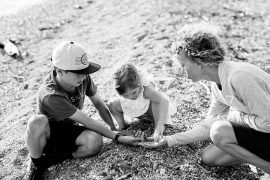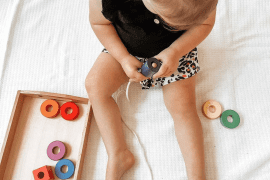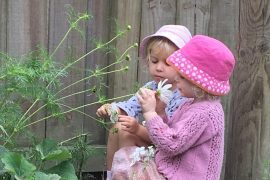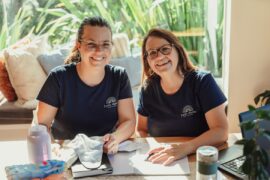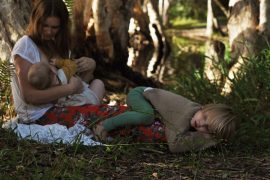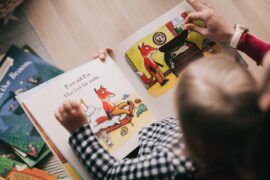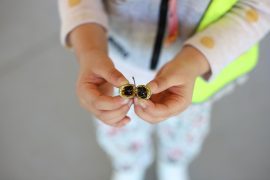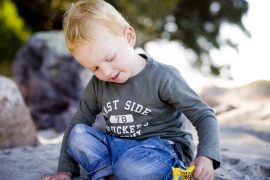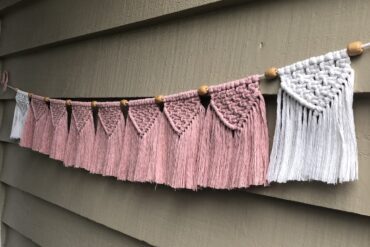3.2.2 – Resources support play-based learning
NQS: QA1: Educational program and practice
Standard 1.2 – Educators facilitate and extend each child’s learning and development.
1.2.2 – Responsive teaching and scaffolding
Core focus: To teach Charlie initial sound identification and awareness through a play-based teacher/parent-initiated approach. This will help Charlie develop early literacy skills which will build the foundations for his future skills in reading, spelling and writing.
What I loved about this activity as an educator and a Mumma was that:
- It was FUN.
- Incorporating initial sound identification into a game involving turn taking, building on social and emotional skills.
- There were lots of repetition (great for moving knowledge learnt to- long term memory).
- Adding the chickpeas as a visual for progress assists Charlie in reducing his sensory overload/overstimulation through the placement of putting them into the tracing letters, making him more relaxed and present in the moment – which means he is more engaged.
- Charlie is a child that likes options to choose from so he feels in control, so this activity provides the comfort of choice, mixed with the little challenge of adding something new to extend his interest.
- As a Mumma, knowing they are being exposed to phonological awareness and early literacy concepts through a play based approach is comforting knowing solid foundations for learning are happening.
- It helps children learn about the world around them, creating connections to their community.
- Teaches new ways of communication.
- Great for building the foundation for language and literacy skills (watch it begin to blossom from here!).
Areas of Development this activity supported:
- Language and literacy skills
- Cognitive development skills
- Fine motor skills
- Hand eye coordination
- Patience and understanding
- Creating a bond with a parent / carer
- Making learning fun
- Memory skills
- Problem solving
- Communication Skills
- Increase in vocabulary
- Rhyme detection
- Initial phoneme identification and alliteration
Extension Activities: As the children become more confident, increase the challenge by adding more initial sound letters (we used two this time, increase one at a time).
Eye spy: take moments within your day to ask what things the children can see starting with letter “x”. it could be in the car, or while on a walk/outside. This could also be an intentional game and activity set up in a play space, etc.
Initial sound bin: gather a bunch of random objects in a box and ask the child to select an item (without being able to see inside). Have the child identify the object and sound out the initial sound of the object.
Create a treasure hunt by reading out clues of items they are familiar with and when they guess correctly, have them try and find it.
One of my favourite things as a parent and an educator is the privilege of getting a front row, interactive seat collaborative.
Angie Haywood is a mum of two boys, Early Childhood Educator and content creator at www.instagram.com/popandpudplay
Source your Busy Books from Busy Books Australia

